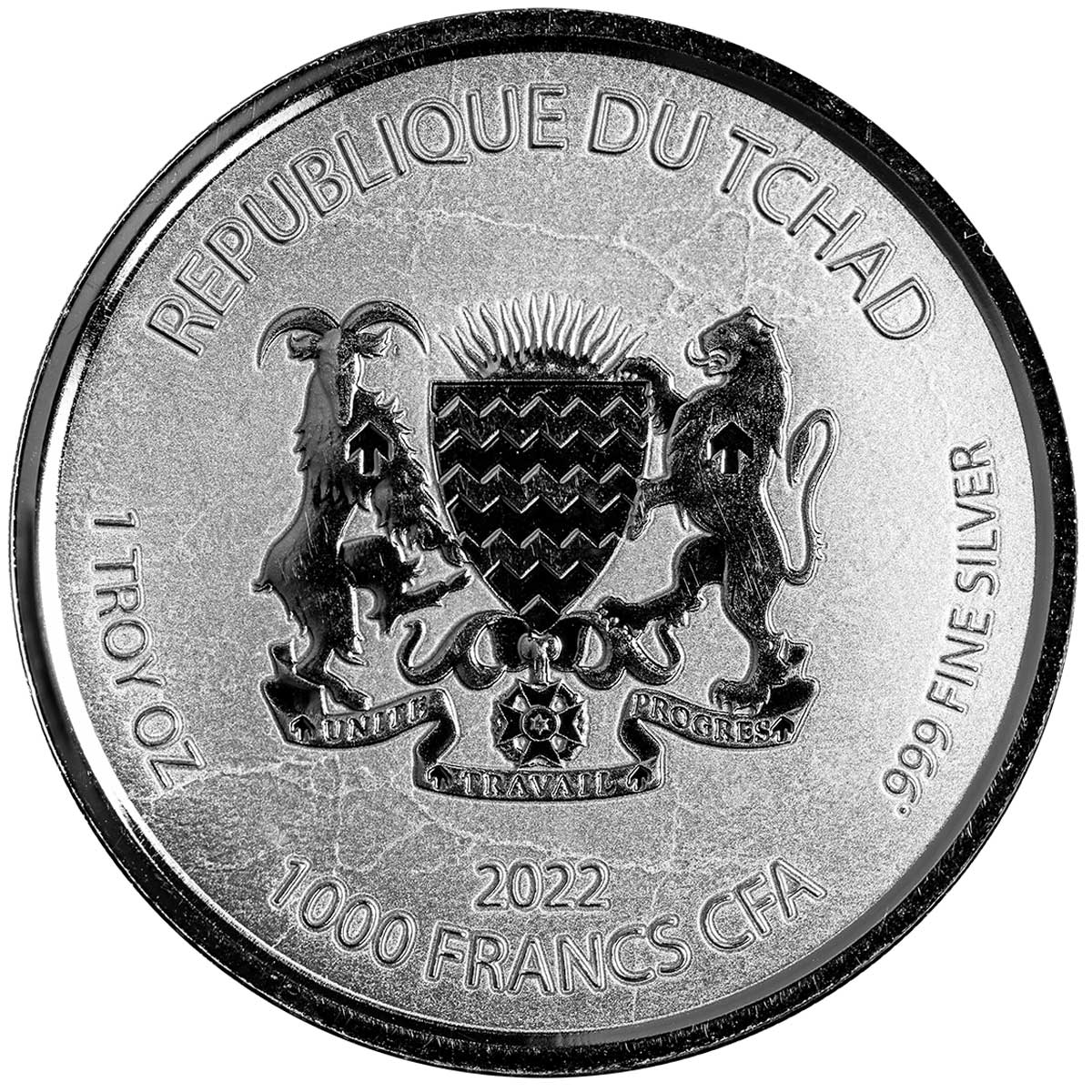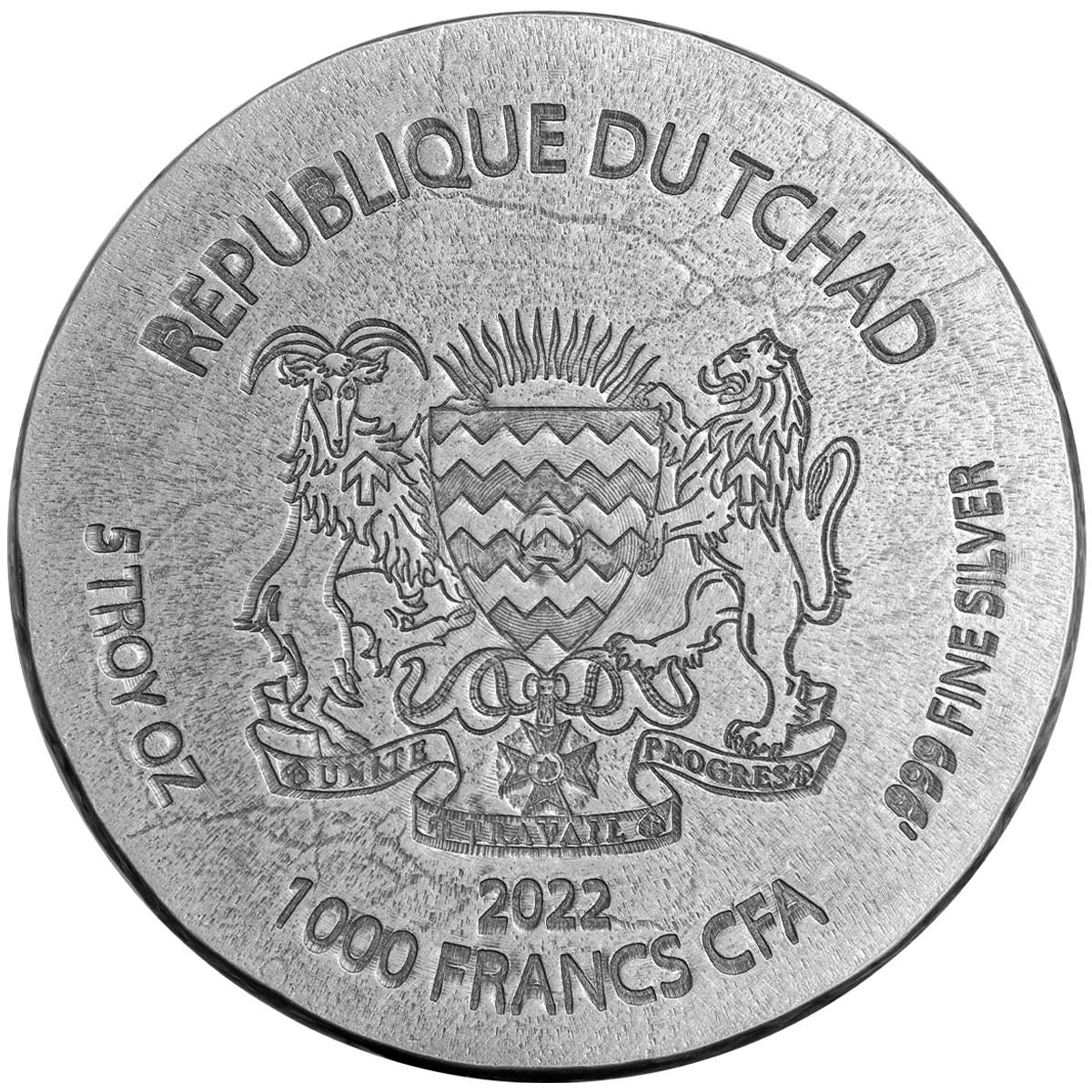Scottsdale Mint’s unique hewned-edge Egyptian Relics series returns with the frog-headed god, Kek
Absolutely one of our all-time favourite bullion coin series, the ‘Egyptian Relics’ series, and its counterparts, have matched some neat visual quirks with the perfect subject for them. Using the art of carved hieroglyphics common throughout the Egyptian empires of antiquity, they’re placed onto a super-thick coin with an edge looking as if it were hewn from stone, thus giving the impression that it was picked up in the ruins of a temple, perhaps.
From a debut back in 2016, we’re now at nine issues for Egypt, with a further four themed around Ancient China. Most of the Egyptian releases focus on that two-dimensional hieroglyphic look, although a few have gone with more general scenes, with less success, in our view. This ninth issue takes that latter route, and depicts the frog-headed god, Kek, in front of a temple facade. I can’t imagine this was a simple thing to bring to life here, and while it looks okay, we’d have gone the hieroglyphic route in this case.
Joining this five-ounce chonky beast is a pair of one-ounce coins. There’s a silver variant sporting a proof-like finish, and a mintage of 10,000 pieces, and a full proof gold coin, boxed with a COA, of which just 100 pieces will be offered. The artwork on these is a little wider in view, cramming more background in, but is essentially the same. It’s a shame the gold didn’t have the same unbound edge that the 2017 King Tut coin did, as that was a simply gorgeous coin. All told, a decent release, although one of the weaker entrants in the series for us. Check out the whole range in our Bullion Profile.
KEK, AN ANCIENT EGYPTIAN GOD
Kek, also known as Kuk, is an ancient Egyptian deity who is associated with darkness, chaos, and primordial creation. He is often depicted as a frog or a serpent, and his name is believed to be derived from the sound that frogs make. In ancient Egyptian mythology, Kek was seen as one of the gods who existed before the creation of the world. He was believed to have emerged from the primordial waters of Nun, along with his female counterpart, Kauket. Together, they represented the darkness that existed before the light of creation.
Kek was also associated with the god Amun, who was one of the most important deities in the Egyptian pantheon. In some texts, Kek was described as the “shadow” or “form” of Amun, and he was often depicted as a companion to the god during his nightly journey through the underworld. Despite his association with chaos and darkness, Kek was also seen as a force of creation and renewal. In some texts, he was said to have assisted the sun god, Ra, in his nightly journey through the underworld, helping to defeat the serpent of chaos and bring forth the dawn.
In modern times, Kek has gained a new following on the internet as a meme and a symbol of chaos and disruption. This usage of the name and image of Kek is not related to the ancient Egyptian deity, but is rather a product of internet culture and the memetic evolution of the image of the frog-headed god. While his mythological significance has waned over the centuries, his image has gained new life as a symbol of internet culture and the chaos of modern times.




| SPECIFICATION | |||||
| DENOMINATION | COMPOSITION | DIAMETER | FINISH | MINTAGE | |
| 1,000 Francs CFA (Chad) | 155.5 g of 0.999 silver | 41.0 mm | Antique | 10,000 | |
| 1,000 Francs CFA (Chad) | 31.1 g of 0.999 silver | 39.0 mm | Proof-like | 10,000 | |
| 3,000 Francs CFA (Chad) | 31.1 g of 0.9999 gold | 32.0 mm | Proof | 555 | |




Leave A Comment